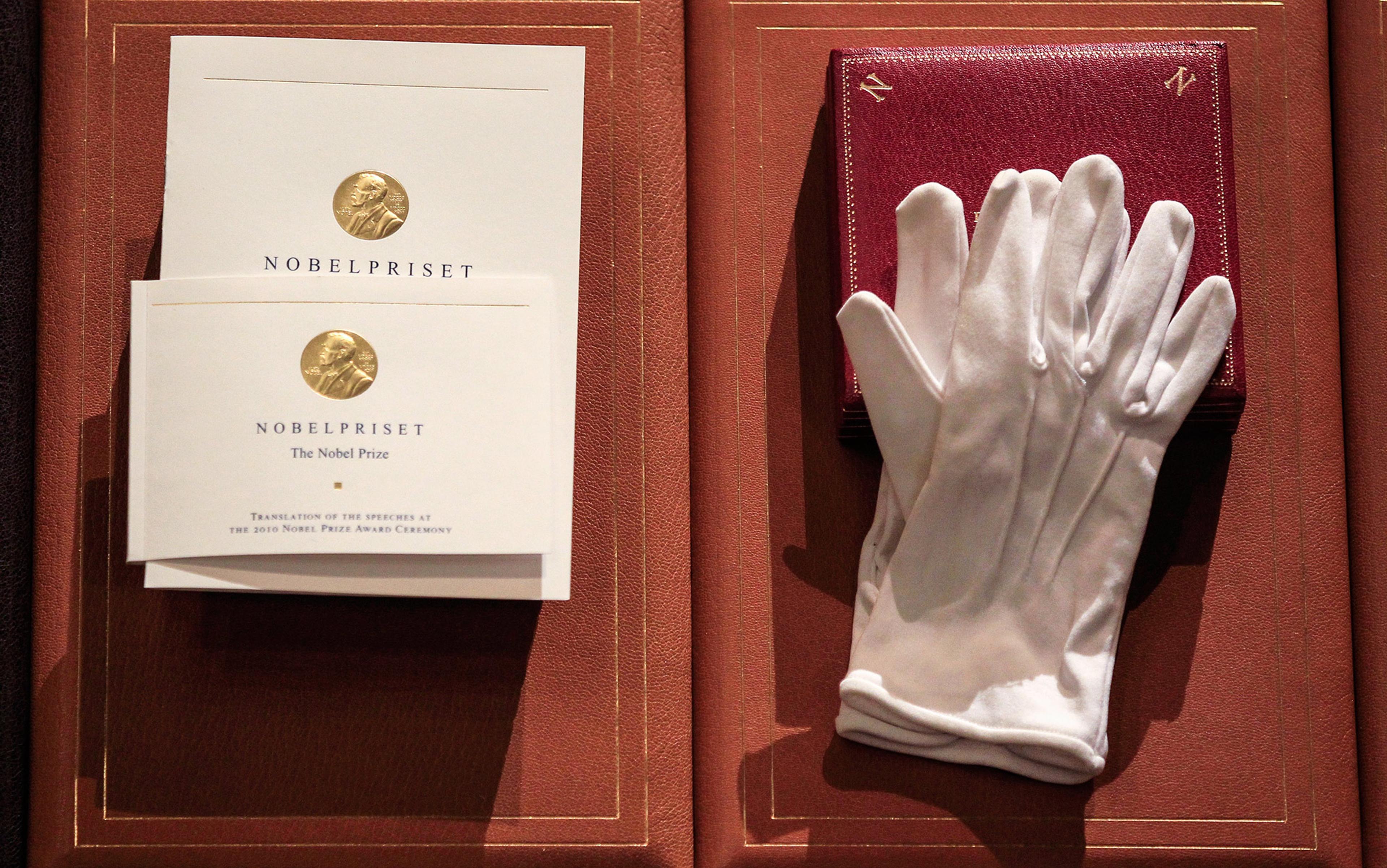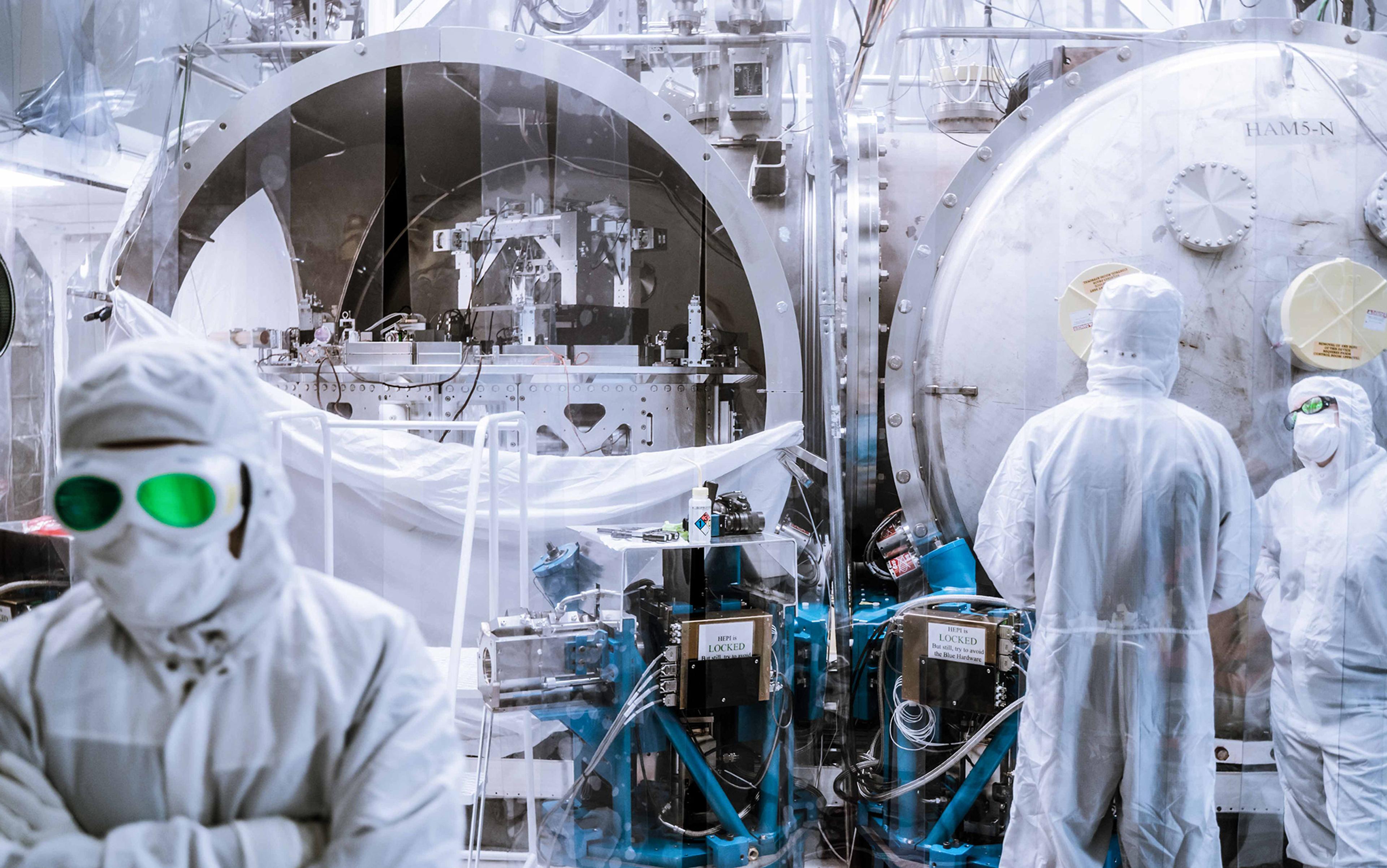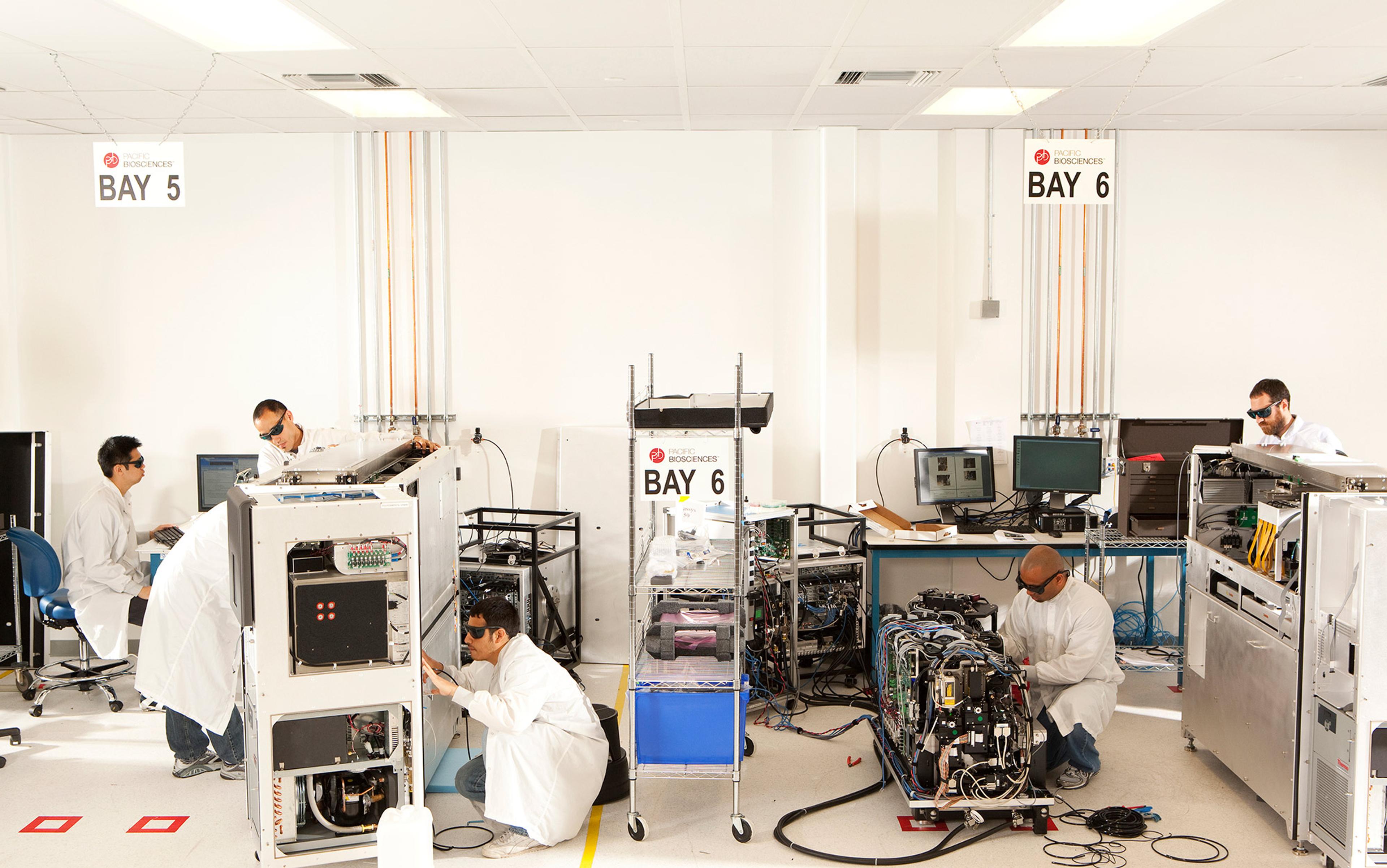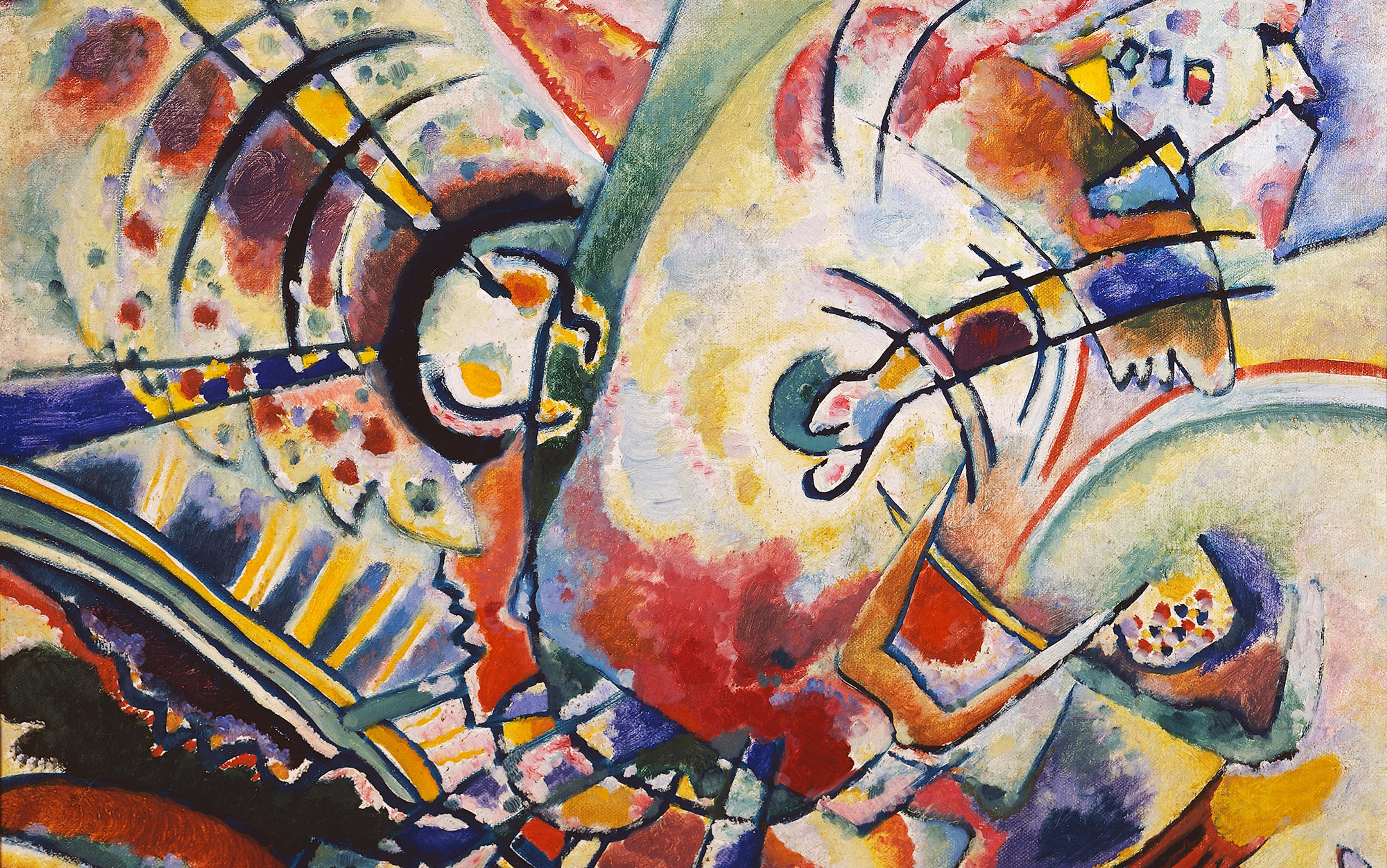Imagine the outcry if, at the 2016 Summer Olympics, the legendary United States swim team – Michael Phelps, Ryan Lochte, Conor Dwyer and Townley Haas – still obliterated the competition, coming first in the men’s 4 x 200m freestyle relay, but only Haas, Lochte and Dwyer received medals, with nothing, not even a silver, for Phelps. ‘Unfair!’ you’d cry. And you’d be right.
The Nobel committee seems not to recognise how collaborative science is today; their paradigm remains the lone genius, or a duet or troika at most. Year after year, they perform their arbitrary and often cruel calculus, leaving deserving physicists shivering in the pool without any medal to show for it. Even those few modern experimentalists who have won unshared Nobel prizes owe their success to numerous collaborators – especially in particle physics and astronomy, which require massive data sets and large teams to analyse them. No scientist gets to Stockholm alone.
The 2013 Nobel Prize in Physics, which was given to Peter Higgs and François Englert for the theoretical prediction of what was later called the Higgs boson, exemplifies four key problems in the selective awarding of the prize. First, it went to only two scientists (even though the committee allows three winners), when there were six other physicists, working in several teams, who independently introduced the idea and could rightfully claim joint custody of the Higgs mechanism. Higgs himself calls the it ‘the ABEGHHK’tH mechanism’, standing for Philip Anderson, Robert Brout, Englert, Gerald Guralnik, Carl Richard Hagen, Higgs, Tom Kibble and Gerard ’t Hooft. All except Brout were still living in 2013.
Second, none of the more than 6,200 experimentalists who helped make the detection at the Large Hadron Collider (LHC) will ever win a Nobel Prize. If the committee would even allow itself the indulgence of four laureates per prize, at least the two leaders of the ATLAS and CMS experiments at the LHC might have had a share. In stark contrast, the 2017 Nobel Prize was awarded only to the instrumentalists who’d built the Laser Interferometer Gravitational-Wave Observatory (LIGO) experiment, which was designed to detect cosmic gravitational waves – ripples in space-time caused whenever massive objects move. Of course, the theorist who had predicted the existence of the gravitational waves that LIGO detected, Albert Einstein, had died 62 years earlier. Even I, who believe the Nobel should be awarded posthumously, think that’s stretching it.
Third, the award of the prize to Higgs and Englert blocked everyone else associated with the Higgs boson, whether experimentalists or theorists, from winning one. Even in clear-cut cases where historians agree that the Nobel committee made a mistake, never has more than one Nobel Prize been awarded per discovery or invention. Doing so would be tacit condemnation of earlier prize committees.
Fourth, the committee made clear that it prefers to confer no more than one Nobel Prize per person. (Only one laureate, John Bardeen, has won two Nobel prizes in physics.) So, since ’t Hooft had already won a Nobel Prize in 1999 (for ‘elucidating the quantum structure of electroweak interactions’), the committee gave the 2013 prize to two first-time winners, despite the enormous role ’t Hooft had played. If the Nobel Prize is a true meritocracy, a scientist should be eligible to win it as many times as she or he makes a prize-worthy discovery. By that standard, Einstein might have had as many as seven Nobel prizes. That would certainly comport with his reputation among his fellow physicists.
In truth, winning ‘only one’ Nobel Prize isn’t such an awful fate, even if it is shared. If the Nobel Prize were given to groups, the prestige of being a laureate would hardly be diminished; the fraction of the Nobel Prize a laureate receives is irrelevant, except in terms of the prize money (one-quarter of the total sum is the minimum amount a laureate can win). All winners receive the same 18-carat gold medal. Technically, Arno Penzias and Robert Wilson, co-discoverers of remnants of the early Universe called cosmic microwave background radiation, each won a quarter of the prize; the other half was awarded for completely unrelated work, as a sort of lifetime achievement award to the Russian physicist Pyotr Leonidovich Kapitsa ‘for his basic inventions and discoveries in the area of low-temperature physics’. Indeed, to the extent that fame is important, and I do believe it is, an educated layperson might know about Penzias and Wilson, but no layperson has heard of Kapitsa, even though he ended 1978 with twice as much cold hard Nobel cash as Penzias and Wilson did. And no one ever says: ‘Oh, Penzias, he only won a quarter of a Nobel Prize!’
Alfred Nobel himself was an inventor, and he was used to filing patents to ensure that his claims were properly staked. When he wrote his will, in the late 19th century, science was done, if not strictly by loners, by single scientists with, at most, a handful of lab technicians. (They didn’t have the students we professors rely on as our ‘force multipliers’ today.) Had the Nobel Prize existed back then, Galileo would have won it in 1611, the year after he announced his serendipitous telescopic observations – and would not have shared it. No other invention, before or since – not the atom smasher, the X-ray, not even the automatic regulators used in conjunction with gas accumulators for illuminating lighthouses and buoys – had the transformative impact on physics, philosophy and even theology that Galileo’s telescope did; within weeks, it was clear that his telescopic observations had moved mankind away from the centre of the Universe. Copernicus, whose principle Galileo had verified, was long dead by 1611, rendering him ineligible. Hans Lippershey, widely credited with inventing the telescope, never actually observed the heavens with it, nor did his version have sufficient magnification to reveal the phases of Venus and the moons of Jupiter, which ultimately provided decisive evidence for the Copernican hypothesis.
It did not take long for the Royal Swedish Academy of Sciences to jettison the strict interpretation of Nobel’s will. In the prize’s second year, 1902, Hendrik Antoon Lorentz and Pieter Zeeman jointly won a sort of lifetime achievement award ‘in recognition of the extraordinary service they rendered by their researches into the influence of magnetism upon radiation phenomena’. The prize was not given for a single discovery or invention (and, of course, their ‘service’ hadn’t happened in the previous year either). Following that, Henri Becquerel and Pierre and Marie Curie won for their work on radioactivity. In the two decades that followed, there were 19 sole laureates. In contrast, the list of recent single laureates is small indeed. The last sole winner in physics was Georges Charpak in 1992.
It’s still rare for more than a handful of theorists to discover a theory at the same time. By nature, theoretical discoveries are serendipitous, and serendipity doesn’t lend itself to multiples; three simultaneous lightning strikes are rare. Nowadays, it’s much harder to be a sole laureate if you are an astronomical observer or an experimental physicist.
It wasn’t always this way. Science was less collaborative in years past. More than 20 of the first 30 Nobel prizes in physics went to inventors or experimentalists, not theorists. The reason for this is shameful but, thankfully, since abolished: in the early 1900s, European intellectuals derided theoretical investigations as anathema to physics, unworthy of Nobel consideration. The physicists who nominated laureates, some of whom were laureates themselves, considered pure theoretical investigations such as Einstein’s special relativity ‘Jewish physics’. Real physicists did experimental physics.
The movement away from lone laureates to multiple winners has accompanied near-inflation-like growth in all scientometrics – the metrics by which science, technology and innovation are measured. The science historian Derek de Solla Price locates the inflection point in the ‘hockey stick’ growth curve at the Second World War, when teams of physicists were kept ‘locked away in interacting seclusion. We gave them a foretaste of urgent collaboration in nuclear physics, and again in radar.’ By any metric, the image of the solitary researcher increasingly seems to become marginalised as a relic from the past.
Laureates collaborate with more co-workers than a matched sample of non-laureate scientists
This was the beginning of the period that Price in 1963 called ‘Big Science’, when research projects in all fields of science enjoyed exponential growth, creating a feedback loop that has taken us from entire fields with only 100 researchers to single papers with 10 times as many authors. We’ve gone from the Royal Society to the Large Hadron Collider in just over a century.
Today, the situation seems irreversible. While there is still diversity in the size of groups, many big projects with big goals require big telescopes and big-dollar amounts. The biologist and philosopher Hub Zwart describes the ratchet-like behaviour of Big Science as not only referring ‘to the actual number of researchers working and collaborating within a particular field, but also to the increased dependence of current research on massive, expensive and sophisticated technologies’ such as LIGO or the LHC.
With so many stakeholders, it shouldn’t be surprising that the competition to win the Nobel Prize is extremely fierce. Of course, not all competition harms science; competition can also be healthy. It lends credibility to new discoveries: a signal detected by a single group doesn’t mean that much without corroboration, and truly settled science becomes possible when more than one team gets the same results. Multiple groups are needed to rule out mistakes and validate findings.
Yet excessive competition leads to wasted resources, the impetus (sometimes resisted, sometimes not) to publish prematurely, and a ruthless winner-takes-all battle to get there first so as to capture the dwindling dollars from federal funding sources in decline. The size of new scientific projects, especially experimental ones such as large telescopes or particle accelerators, makes the competition only worse. Funding agencies are partially at fault for the climate of scientific competition, as the Nobel laureate Saul Perlmutter, an outspoken critic of the current funding environment, has explained. Perlmutter’s team, the Supernova Cosmology Project, was in a fierce battle with a rival team, the High-Z Supernova Team, to measure how the Universe’s expansion was slowing down over time. ‘They would race us to the results,’ Perlmutter has said. ‘Probably 90 per cent of all the people on Earth working on supernovae were involved in one of the two projects. It was a fiercely fought race. We wouldn’t tell each other anything that was going on. We would be flying to the same telescopes they had just finished with.’
To their astonishment, the two teams independently found that the Universe wasn’t slowing down at all. Its expansion rate was, instead, speeding up. They had found evidence for dark energy, a mysterious form of antigravity – a latter-day version of inflation. Though they were in direct competition, members of both teams won the Nobel Prize.
In a study of the publication dynamics of Nobelists, the science historian Harriet Zuckerman has found that laureates collaborate with more co-workers than a matched sample of non-laureate scientists. Yet, she observes, since the current rules compel the committee to overlook an increasing number of collaborating scientists, the award of the Nobel Prize to no more than three members often leads to the collaboration dissolving soon afterward. Surely, this is not in the best interests of science.
I’d prefer that scientists be guided by the man who was the father of my field of observational cosmology. Robert Dicke declined Penzias’s offer to be a third author on the Nobel Prize-winning CMB discovery paper, a decision that likely cost him a share of the 1978 Nobel Prize. While he might have lost out on science’s top award, Dicke’s group (at Princeton University) joined Penzias and Wilson’s (at the private Bell Labs) to form a public-private partnership that allowed the Big Bang theory to achieve a wide acceptance.
Recently, the most powerful scientific organisation of its kind drastically changed the way it hands out its golden prizes. In 2009, the Academy of Motion Picture Arts and Sciences (yes, sciences) doubled the number of Best Picture Oscar nominees from five to 10, opening the wellsprings of credit to flow more fully.
Both the Nobel prizes and the Academy awards are meritocratic, determined by peers and ostensibly egalitarian, with no heed paid to commercial success. Both ceremonies are televised live, from giant halls filled with pomp and circumstance, and guests in resplendent regalia. Winners receive golden idols from royalty, of the Swedish and Hollywood varieties. While Hollywood doesn’t adhere to Nobel’s stipulation that actors provide the ‘greatest benefit to mankind’, there is a humanitarian award and a definite, if self-congratulatory, sense that the industry can influence society for the better.
When the physics Nobel Prize winners were announced in 2012, the physicist Jim Al-Khalili made several suggestions for modernising the prize in an opinion piece in The Guardian. He piqued my attention when he wrote:
Most Nobel prizewinners will have carried out their breakthrough work for many years before they are recognised with the prize, and probably long after they had given up hope of that ultimate accolade – these are not the Oscars, after all, where an actor at least knows that he or she has made it to a shortlist … For the rest of the scientific community around the world, this is also a time to hope that the winner comes from one’s own particular area of research, boosting the chances of bathing in reflected glory and gaining valuable research funding.
Al-Khalili’s comment made me wonder: what if the Nobel committee recognised all the nominees each year? Currently, the names of the nominees (and nominators) are kept secret for 50 years. Why must the names of those who came close to winning the Nobel Prize be classified as if they were part of the Warren Commission report on the assassination of JFK?
The reason given by the Royal Swedish Academy of Sciences for the secrecy around nominations is to avoid upsetting nominees who do not win. This seems like a weak argument. Even though it’s a cliché, Oscar also-rans often say: ‘It was an honour just to be nominated!’ Announcing the nominees would benefit the fields that are nominated as well. Scientists in those fields would receive more prominence and potentially more funding, just as those in the winner’s field do, as Al-Khalili pointed out. It would also be gratifying, as a nominator, to know that your choice was considered. It’s an honour to be a nominator, which I’ve been, but if your nominee doesn’t win, perhaps you won’t waste your next opportunity on nominating the same person (assuming, of course, you haven’t written a book critical of the Nobel Prize process, and thus scuttled your chances of a follow-up invitation).
Hollywood has Stockholm beat when it comes to credit and awards
Of course, you might contend that revealing all the nominees could take away from the winner’s lustre, and put the attention on others instead of the winner. But, in practice, neither is likely to happen, just as it does not happen in the Academy Awards. Nobel Prize winners will always, rightfully, be recognised as society’s fifth-degree black-belt intellects. And, they will continue to rack up awards, seeing as they’ve already received the ultimate accolade. In fact, they might appreciate some time out of the spotlight: the time demands on laureates are infamous, leading T S Eliot to opine: ‘The Nobel is a ticket to one’s funeral. No one has ever done anything after he got it.’
As aloof as scientists are toward celebrity, we could learn from our artistic counterparts. Hollywood’s version of inflation is not of the cosmological sort, but regards recognition. According to an article in The New York Times, ‘Who Was That Food Stylist? Film Credits Roll On’ (2004), the time it takes to roll the credits for a major Hollywood movie is pushing 10 minutes – triple the time it took the Universe to make almost all of its hydrogen nuclei.
Modern Hollywood, like modern science, is more collaborative than ever. Figure 1 below shows the number of credited cast and crew members (from director and starring actors to bird wrangler and on-set florist, as well as the vast teams creating computer-generated imagery) in Best Picture Oscar-winning films since the awards’ inception in 1927. Compare this with figure 2 below, which shows the number of credited collaborators on prize-winning discovery papers since the Nobel’s inception in 1901. Both graphs show a characteristic ‘hockey stick’ shape, increasing dramatically since the first Nobel Prize to Wilhelm Röntgen (one person) and the first Oscar for Best Picture to Wings (23 credited cast and crew), to 6,225 combined co-authors on the ATLAS and CMS experiments at the LHC, and 353 credited contributors to 2014’s Best Picture winner, 12 Years a Slave.
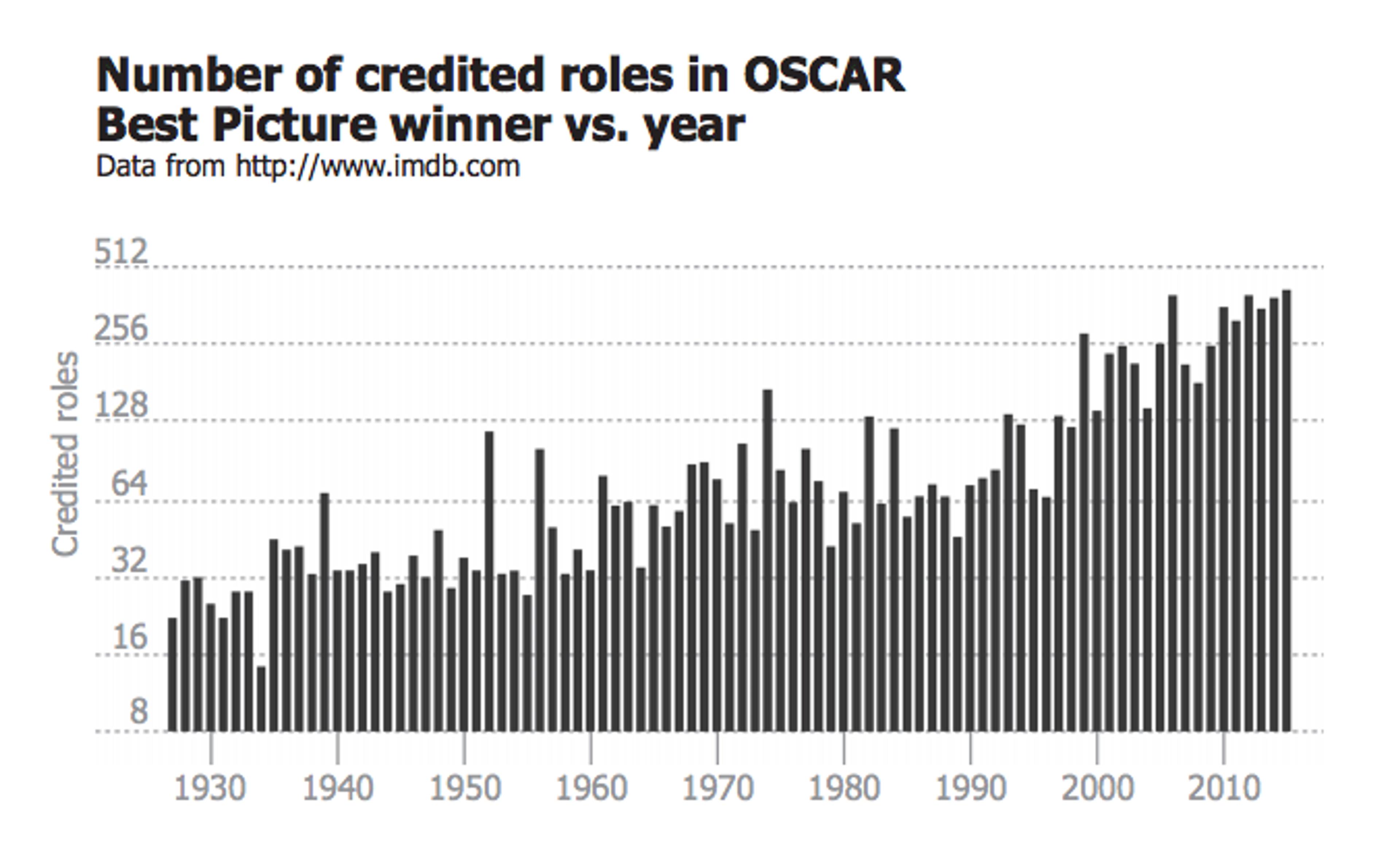
Figure 1. Number of credited cast and crew in Academy Award Best Picture winners since the inception of the awards, plotted on a logarithmic scale. (Internet Movie Database, © Shaff er Grubb)
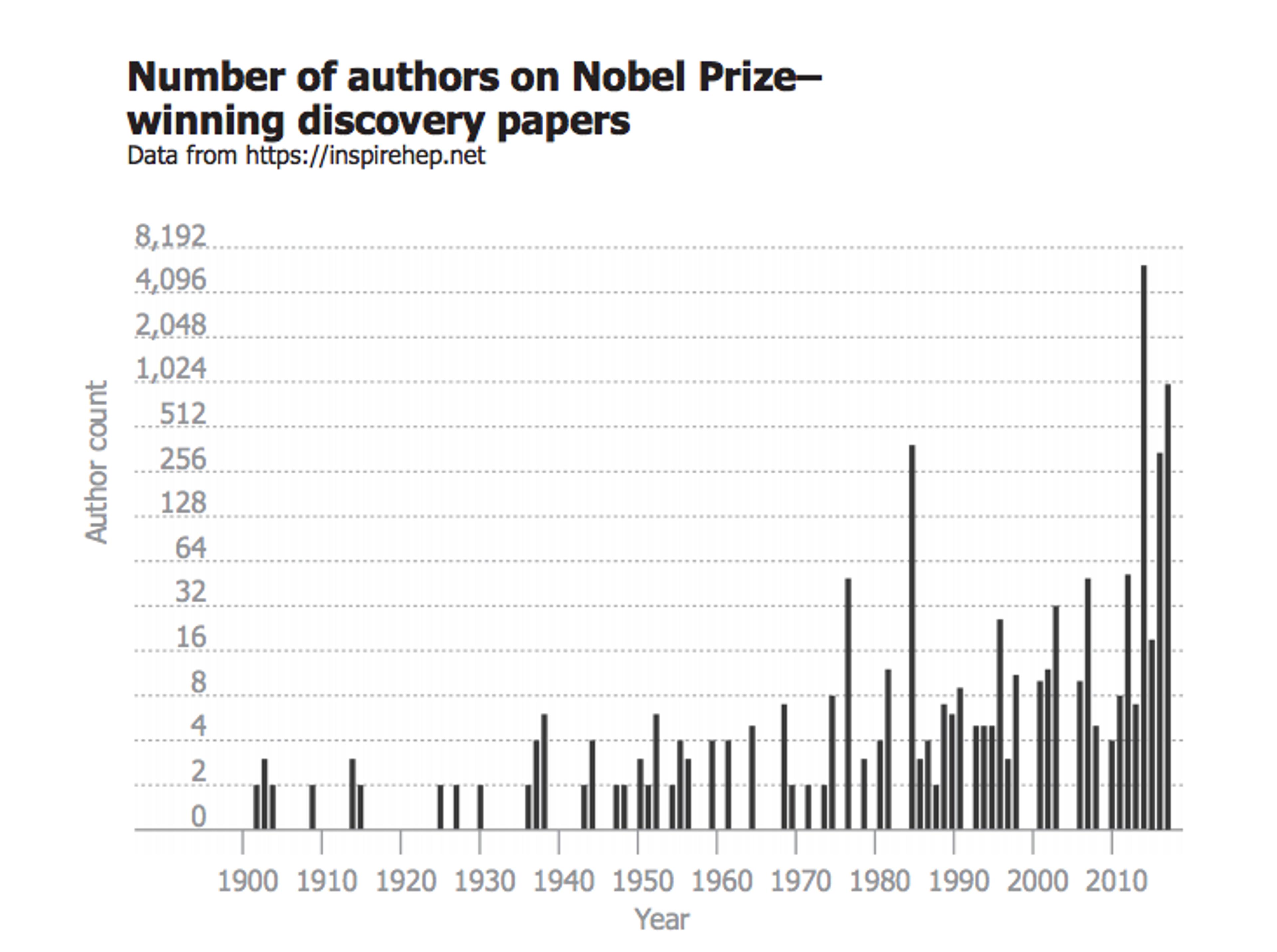
Figure 2. Number of credited collaborators on Nobel Prize-winning experiments in physics, plotted on a logarithmic scale. Four particularly large values stand out: 385 authors on the discovery of the W and Z bosons in 1984, 6,225 authors on the two Higgs boson discovery papers in 2013, 342 authors on the neutrino oscillation discovery paper in 2015, and 1,004 authors on the LIGO gravitational-wave detection paper in 2016. Gaps represent years with no prize or prizes given for theoretical discoveries. (Nobel Prize website and INSPIRE-HEP database, © Shaff er Grubb)
Hollywood has Stockholm beat when it comes to credit and awards; everyone involved with each year’s Best Picture award receives a share of the credit. So too does each producer – Hollywood’s version of the principal investigator – receive an Oscar for bringing the winning film to fruition. Artificially imposing a maximum of three Nobel laureates merely fosters unnecessary competition, and there’s enough of that in science already.
Why not an eight-fold cord, for the ABEGHHK’tH mechanism? Or a 1,000-stranded cord for all of those who collaborated on LIGO? As the historian Elisabeth Crawford has pointed out, the original statutes of the Nobel Foundation didn’t forbid awarding the physics prize to a group: ‘In cases where two or more persons shall have executed a work in conjunction, and that work be awarded a prize, such prize shall be presented to them jointly.’
Some have complained that giving a share in the physics prize to every scientist involved would devalue the award, decreasing the well-earned attention that the originators of the project deserve. Yet awarding the Nobel Peace Prize to groups has in no way decreased its prominence. The peace prize can be awarded to groups, individuals, or groups and individuals (as was the case, for example, with the 2007 prize, half of which was awarded to the Intergovernmental Panel on Climate Change, and the other half to the former US vice president Al Gore).
Especially in experimental science, where collaboration is essential, expanding recognition would help convince young people to take more risks in the ideas and projects they pursue. For me personally, the most rewarding aspect of my job is working with scientists from all over the world, from Uganda to Ukraine, from Thailand to Texas, on every continent including Antarctica. It’s high time the Nobel Prize reflects the true reality of modern physics: the best science of all is the most collaborative.
Reprinted from ‘Losing the Nobel Prize’ by Brian Keating. Copyright 2018 by Brian Keating. With permission of the publisher, W W Norton & Company, Inc. All rights reserved.
